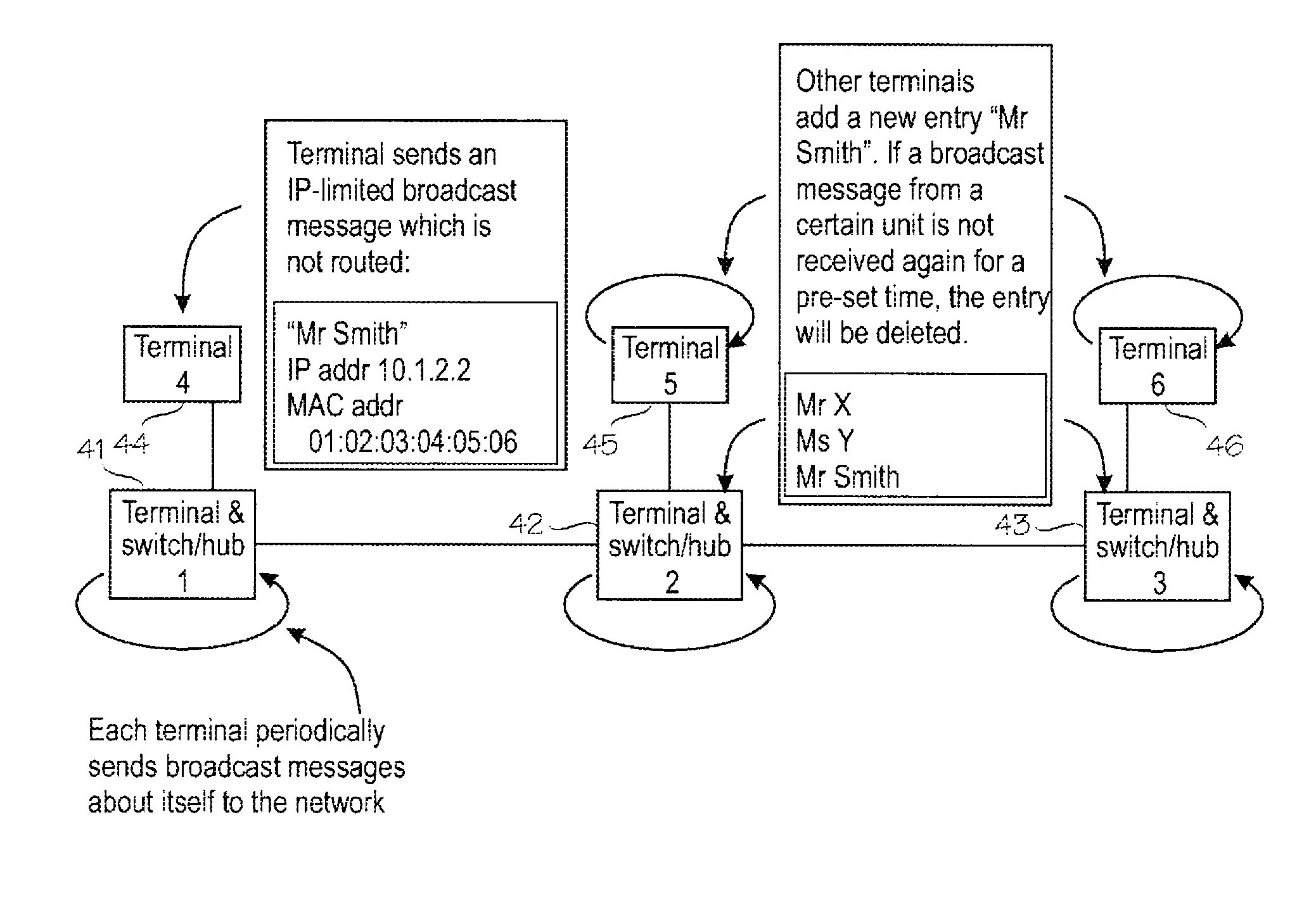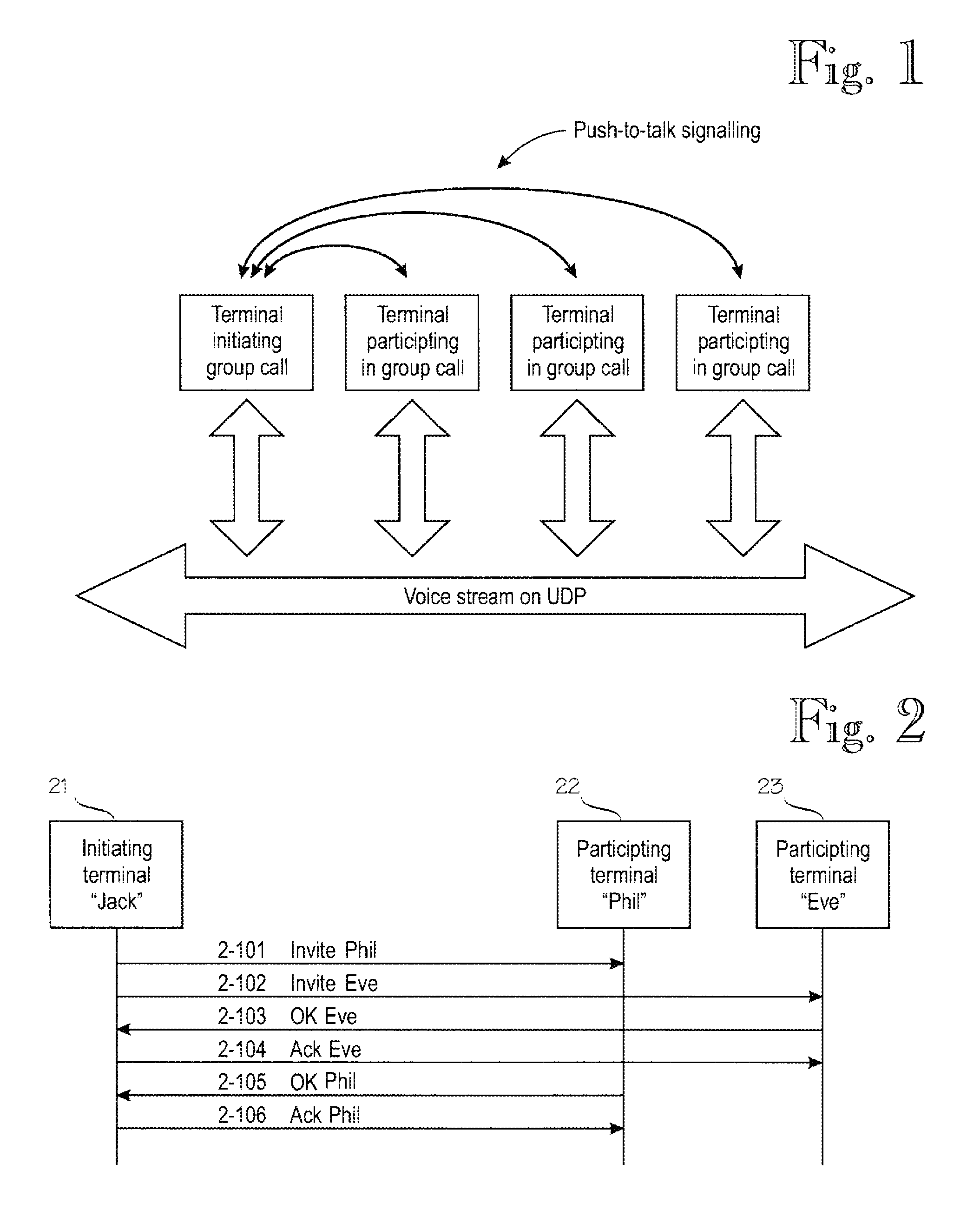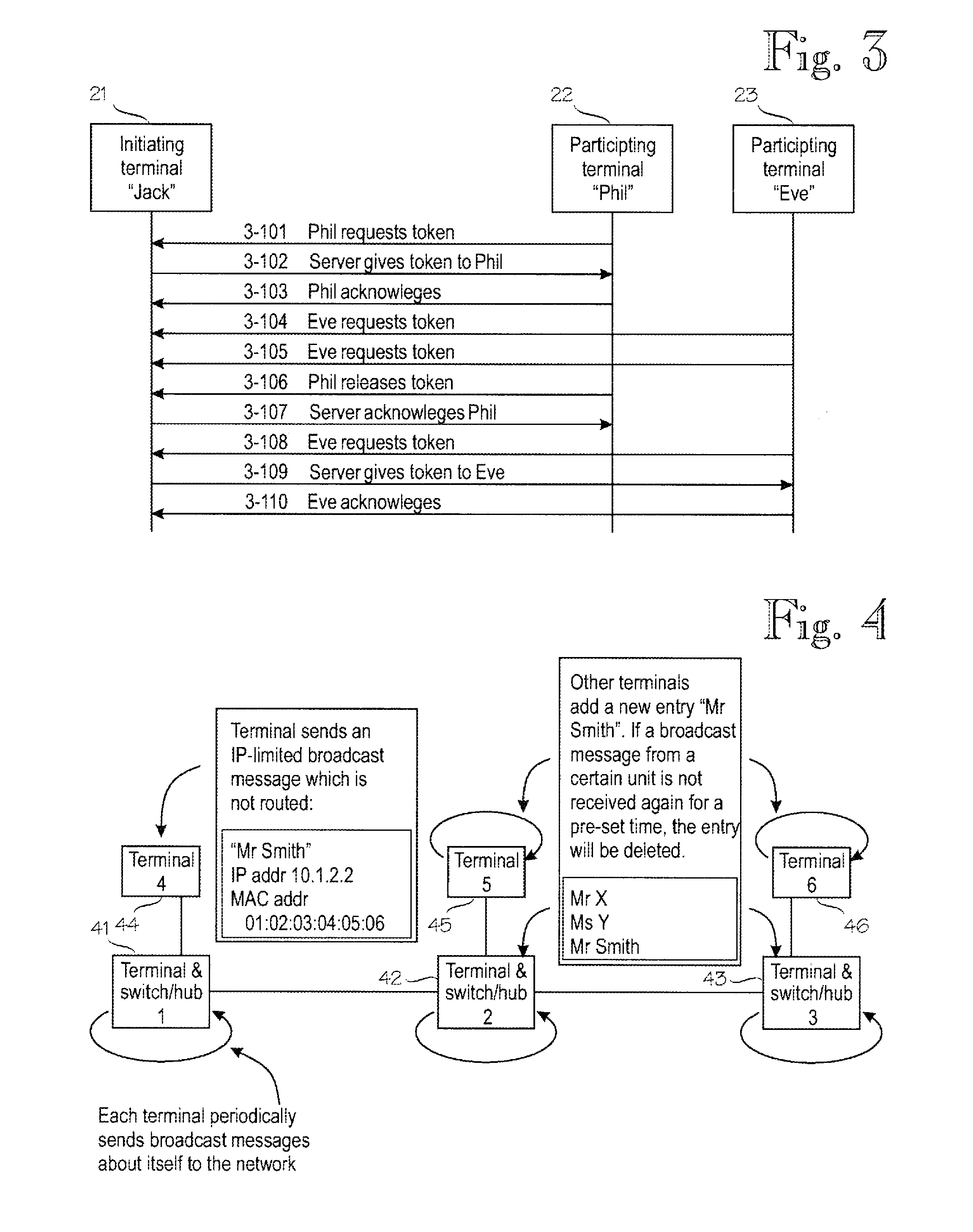Methods and Equipment for Fault Tolerant IP Service
- Summary
- Abstract
- Description
- Claims
- Application Information
AI Technical Summary
Benefits of technology
Problems solved by technology
Method used
Image
Examples
Embodiment Construction
[0026]FIG. 1 schematically illustrates signalling relating to group calls in a restricted mode VoIP network. As stated earlier, a dedicated SIP server (not shown) is responsible for group call establishment in normal (full) operation of a VoIP network, in accordance with RFC standards 2500, 3261, 2543, 2327, 3264 3515 and 3265. The terminals and network elements according to the present invention may be implemented such that in normal operation, the terminals and network elements operate in a conventional manner, and the departure from the prior art is only evident in restricted mode of the VoIP network wherein at least one key functionality of the network is missing, as specified later in connection with FIG. 5.
[0027]In restricted mode the terminals and network elements according to the present invention are capable of establishing group calls without a dedicated SIP server and / or DHCP server. Instead a terminal that needs to initiate a conference call acts as a SIP server. In the ...
PUM
 Login to View More
Login to View More Abstract
Description
Claims
Application Information
 Login to View More
Login to View More - R&D
- Intellectual Property
- Life Sciences
- Materials
- Tech Scout
- Unparalleled Data Quality
- Higher Quality Content
- 60% Fewer Hallucinations
Browse by: Latest US Patents, China's latest patents, Technical Efficacy Thesaurus, Application Domain, Technology Topic, Popular Technical Reports.
© 2025 PatSnap. All rights reserved.Legal|Privacy policy|Modern Slavery Act Transparency Statement|Sitemap|About US| Contact US: help@patsnap.com



